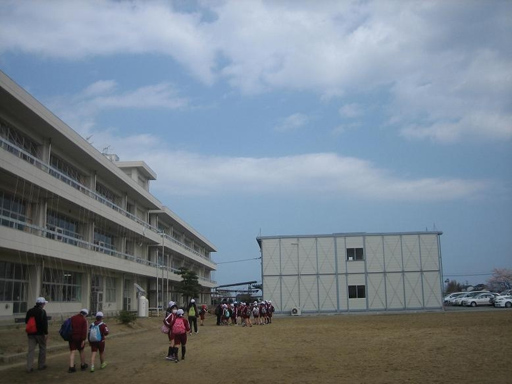
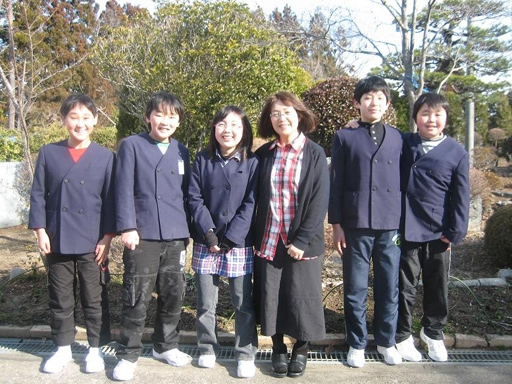

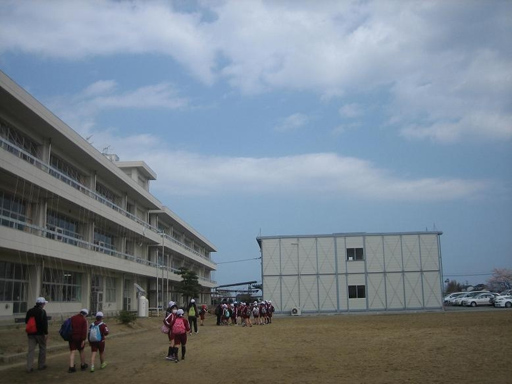
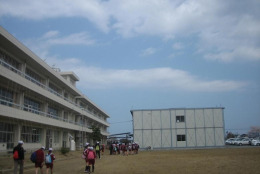
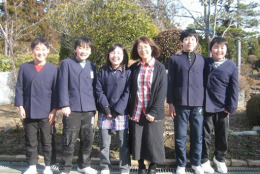
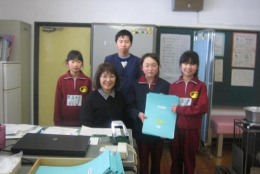
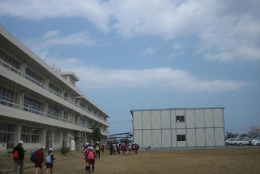
Saeko Robinson, wtop.com
WASHINGTON – From champagne to fireworks, welcoming the new year in the U.S. is mostly about partying with friends. In Japan, though, New Year’s Day is something similar to Thanksgiving where many families gather for a special meal.
During the second such holiday in Fukushima after a massive earthquake and tsunami on March 11, 2011, triggered a nuclear power plant meltdown, people who live near the plant are still facing the consequences of the disaster.
Akemi Maeshima, a retiree from Rockville, could not bear watching the devastation in her home country. She packed her bags and left Montgomery County, the place she has called home for the past 10 years.
“I really wanted to help,” she says. “I was looking for volunteering opportunities, but I could not find many requests for volunteers from the U.S., so I decided to go in as an individual.”
Maeshima was a school nurse for 25 years in Japan. Relying on that experience, she has been volunteering for about a year at Mano Elementary School in Minami Soma City, which was forced to evacuate after the nuclear plant accident. She sees a range of issues among children.
“Some struggle to gain weight while others gain too much and become overweight,” she says. “Insomnia and frequent headaches are causing some kids to miss school.”
It’s not so much that she sees the physical injuries from radiation. Instead, she sees children’s lives turned upside down.
“As expected, all children are mentally stressed,” Maeshima says. “They do look fine, but as I learn more about their family situations, I feel for them.”
Challenges for the community
In her renewed role of school nurse, Maeshima counsels her 47 elementary school students displaced by the nuclear accident.
“More than half of the kids now live in temporary housing after losing their homes in the tsunami or escaping from the nuclear power plant,” she says.
The tsunami washed away the school building and more than half of the students moved away after the evacuation order. The school is now in a temporary building shared with another school just outside of the evacuation zone.
For those who remain in the community, the challenges are enormous and children are faced with family lives that are upended.
One fisherman’s family of four used to live on the coast, but their home was washed away.
“They all moved into the mother’s parents home a little distance away, but the relationships didn’t work out,” Maeshima says. “The father was so disappointed he could not continue fishing anymore, and ended up divorcing and leaving the family.”
Some kids saw more than they should have. A third grader’s grandmother went missing in the tsunami, so the family started looking for her in the debris. After several days of searching, they still hadn’t found her.
“One day, the boy said, ‘I want to go’ and joined his parents in the search,” she says. “He ended up seeing a lot of bodies in debris. Clothes were torn, some were missing limbs. You couldn’t even tell. He saw horrible bodies. The very next day he started having trouble sleeping from the shock. He was traumatized.”
His grandmother’s body was discovered a month later. Ever since, he has had the tendency to miss school.
“Even if he shows up, he visits me often in my office to talk,” Maeshima says.
Unintended consequences on children’s health
To protect residents from radiation, the government put a strict limitation on time spent outdoors. Many children in Fukushima were cooped up indoors for more than a year.
The limitation’s unexpected consequences caught Maeshima by surprise on a school field trip. As students of Mano Elementary School walked to a nearby facility less than two miles away, she noticed many of them were out of breath.
“Their stamina has declined quite a bit,” she says.
After lunch, students were excited to be able to play dodgeball in a big gym, but it was more than their bodies could handle.
“In less than 10 minutes, three students came to me reporting lightheadedness,” she says. “It’s just dodgeball.”
She says teachers have a big task ahead to maintain the children’s health in the future.
Residents report strange symptoms
How much radiation is harmful to humans? Japan has been asking this question ever since the nuclear power plant exploded in Fukushima following the tsunami.
Maeshima has been volunteering since January at the elementary school in Fukushima, which is under the evacuation zone near the crippled nuclear power plant. Some of the mothers told Maeshima that they lost hair within six months of the plant meltdown and subsequent release of radiation.
“Their hair started falling out,” she says. “They were almost bald. They told me they were wearing wigs.”
An office administrator at her school, a 26-year-old woman, reported that her throat had started to hurt and her lymph nodes had started to swell.
In both cases, doctors told the women there was no way to determine if the symptoms were caused by radiation. But the women saw other patients with similar symptoms at doctors’ offices, Maeshima says.
“They went through a tremendous amount of stress and those symptoms can be caused by stress,” she says. “There may be a direct impact from radiation, but no one, no doctor, can tell.”
Maeshima wraps up her stay in March 2013. She says donations from all over the world have helped the victims.
“I’ve seen stacks of textbooks arriving or library books or educational materials (that) have arrived,” she says.
They are all helping as Fukushima rebuilds its schools and attempts to move forward.
Follow @WTOP on Twitter.
(Copyright 2012 by WTOP. All Rights Reserved.)







